The fair maiden glides through a door at the peak of a staircase, pausing over the balcony to survey her onlookers. One by one, they stop, and eyes are on her, including the prince’s. The dress drips money and her positioning above the gathered crowd showcases that she is above them, even if she’s a commoner in disguise. Most ballrooms, school dance venues, and wedding reception halls don’t have staircases because that would take space away from the dancing floor, but several popular Cinderella adaptations have the heroine sweep into the ballroom at the top of the stairs.
This technique is used both because it’s aesthetically appealing and can visually represent a status change. The fairy tale genre prioritizes individuals over masses and setting the heroine above the rest of the partygoers helps draw attention to her as an individual. Sometimes the entire ballroom stops to stare, other times, the entrance draws the prince’s eye alone. Sure, we know Cinderella is pretty, but in a room full of women, it makes sense that she’d need to somehow appear special upon arrival to catch his fancy.
In a film set in modern times with high hemlines, a cinematographer can use this trope to showcase how sexy the female lead is, panning the camera up along her legs. But in an old-fashioned ball scene, the effect is elegance. Flouncy ball gowns look all the flouncier when petticoats can fluff up and down as she descends the steps. The heart of the Cinderella story is the rags-to-riches vibe, and by putting her above all the other ladies, the staircase positioning can function as a visual representation of a “rise” in social class. She has successfully climbed the social hierarchy.

The first Cinderella to make a grand entrance was probably Julie Andrews in the 1957 production of Rodgers and Hammerstein’s television musical. She would be followed by Lesley Ann Warren (1965) and Brandy Norwood (1997) in the remakes. Brandy’s iteration is the most impressive, since her set is grander than the “look, we’re in a production studio” background of her predecessors. The staircase even got featured on the VHS cover. Julie Andrews’s staircase helps Prince Christopher catch sight of her when his view would otherwise be blocked by the stepsister’s tall feather hair ornament. Her grand entrance interrupts the stepsister’s babbling about dew descending “from Heaven.” She turns around to sight Cinderella on the stairs as she says that phrase, indicating to the audience that Cinderella is appearing as a sort of angel.
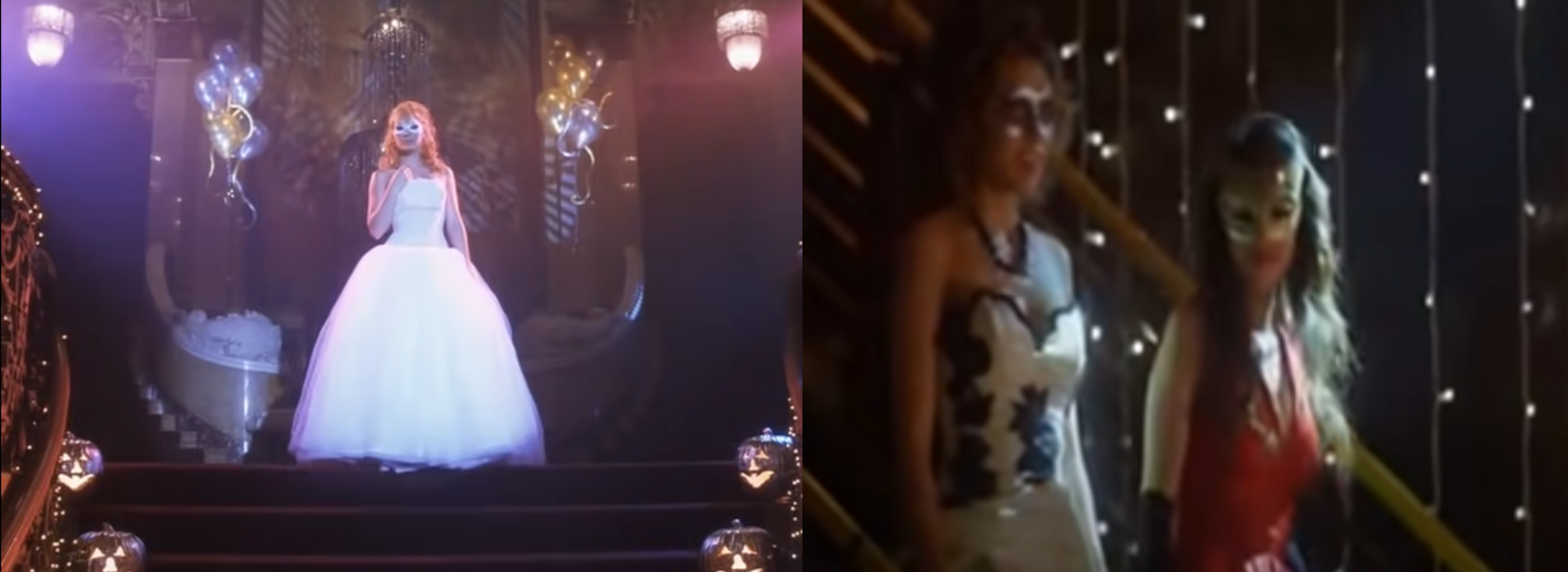
In A Cinderella Story, Hilary Duff’s staircase entrance draws enough attention that someone puts a literal spotlight on her. She halts in surprise, indicating that the lighting isn’t for the audience’s benefit alone. In-universe, the lights crew managing this teenage party must be floored by her presentation and want to lend her a hand. Its sister film Another Cinderella Story has the Cinderella character shows up to a party in a hot red dress despite the black-and-white dress code. She’s accompanied by a friend who actually followed the dress code, but her coloring has the prince character telling her she made “quite an entrance.”
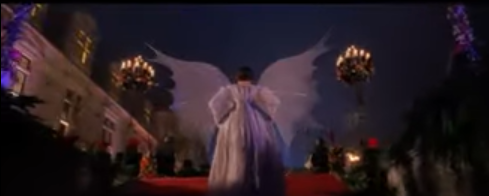
In Ever After, the crowd is distracted by the king speechifying as Danielle climbs up a staircase to the party area, but the viewer gets a good shot of her ascending stairs in butterfly wings-visually conveying a rising.
Enchanted, Disney’s self-parody that contains Cinderella elements, has a rare example of the heroine descending a staircase with her prince. Edward holds Giselle’s hand on the way down, but her eventual husband, Robert, is waiting for her at the bottom. The staircase entrance has become a genre staple, though not a necessity. Cinderella enters at ground level in the 1976 Slipper and the Rose.
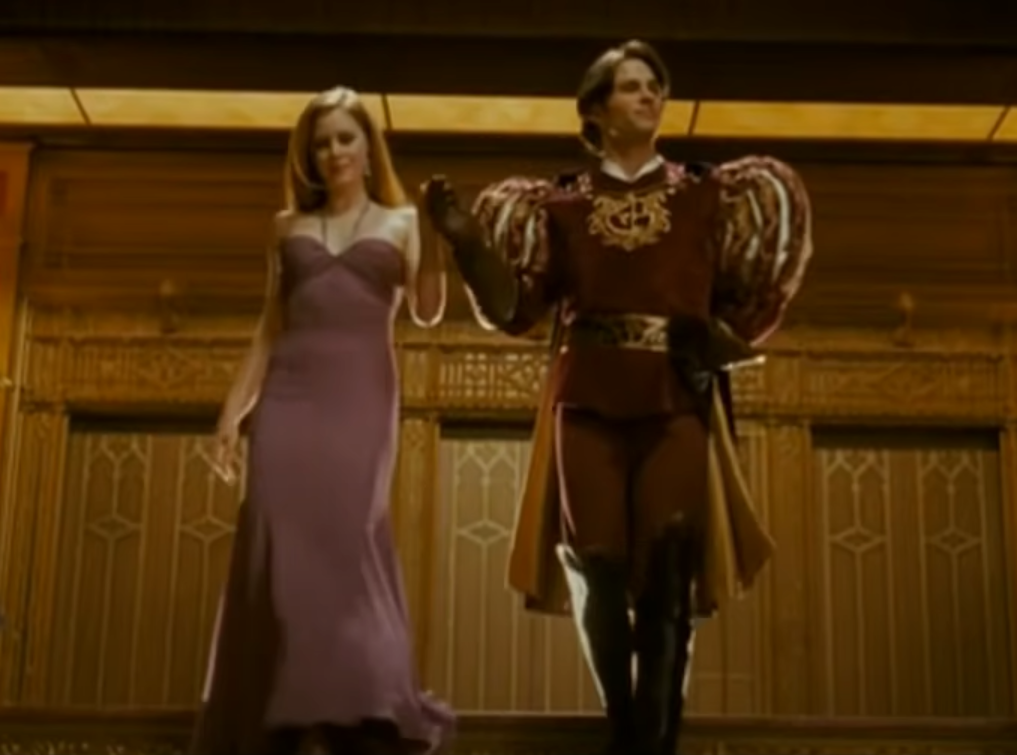
Princess rom-coms that do not directly adapt a fairy tale still like to use staircases to invoke a Cinderellaesque ascension vibe. Princess Protection Program has a pack of masked promgoers, one of them a princess incognito, taking a school bus to the dance for some reason. They look impressive as they descend the bus stairs one after another, offending a prom queen wannabe who showed up in a low convertible. At the close of the film, the princess becomes queen and walks down the stairs of her coronation platform to greet her subjects.

Mia of Princess Diaries pointedly does not get a grand entrance, getting rushed in the side door late in wet hair and a sweatshirt. Earlier in the film, she trips while pacing up and down the bleachers in a school uniform skirt. She makes up for it in the sequel by arriving in style to her 21st birthday party. A palace aide describes it beforehand as a “double-door entrance.” She later has a flirt-argument with one love interest on the grand staircases she’ll descend for her coronation. On these stairs, she accuses him of trying to steal her throne, and on a different staircase, she holds a pragmatic conversation about arranged marriage with a rival love interest. Mia hosts a slumber party with a gaggle of other princesses that involves mattress-surfing downstairs, literally bringing princesses down-to-earth. Julie Andrews, playing Mia’s grandmother, joins in. The two movies demonstrate a playful awareness of stairs’ significance in the commoner-turned-princess genre.
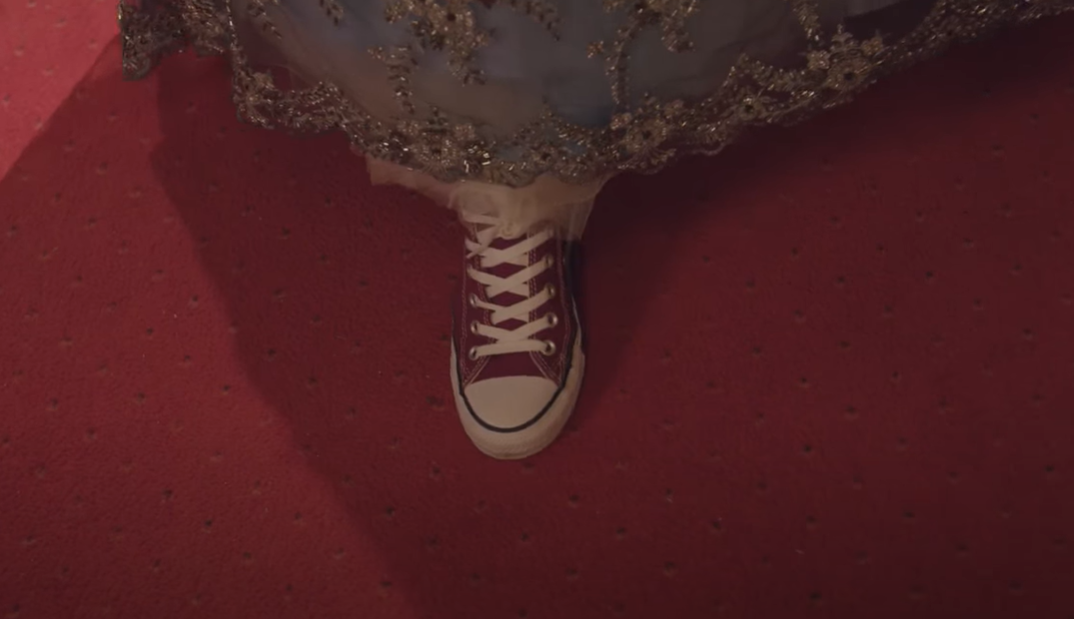
A Christmas Prince showcases shoes-on-staircases for a Cinderella shoutout. Journalist Amber befriends a prince’s little sister, Emily, as she goes undercover as a math tutor to get the inside scoop on the prince. They fall in love, naturally, and she’s invited to a ball. The ballroom stops and stares as she descends in her finery, but Amber catches Emily’s eye as she lifts the hem of her ballgown to show her she’s wearing red Converse beneath. Emily laughs and Converse-beneath-ballgowns become Amber’s signature look. She reprises them in her wedding.
In real-life royal weddings, the thematic climax ought to be the wedding vows, or the kiss, but the cinematographic climax in print and social media is often the staircase exit, where the princess bride is presented to the crowd. For the actual wedding guests, the bride showing up is the big moment, and she’ll walk down a flat aisle. But spectators and journalists congregate outside and royal weddings occur in cathedrals, abbeys, or castle chapels with a whole lot of outdoor steps, perfect for showing off a long, flowy train. If the bride is a commoner, the staircase exit marks the first moment anyone sees the woman who has ascended to princesshood.

There are other film techniques movies can use to make a woman prominent from across a crowded ballroom. In West Side Story, Maria arrives at a party in a white dress when everyone else is in color. The camera takes Tony’s eye-view and the other dancers melt into a colored blur while his attention centers purely on her. These lovers are separated by racial tensions and gang violence, but not a class difference.

The staircase shot is so beloved because it creates a visual reminder that one lover is “above” another, or that someone has recently ascended. For a lofty staircase to exist in a scene in the first place, some character here has to be rich. Even non-fairy tale media utilizes staircase entrances to visually depict class differences.
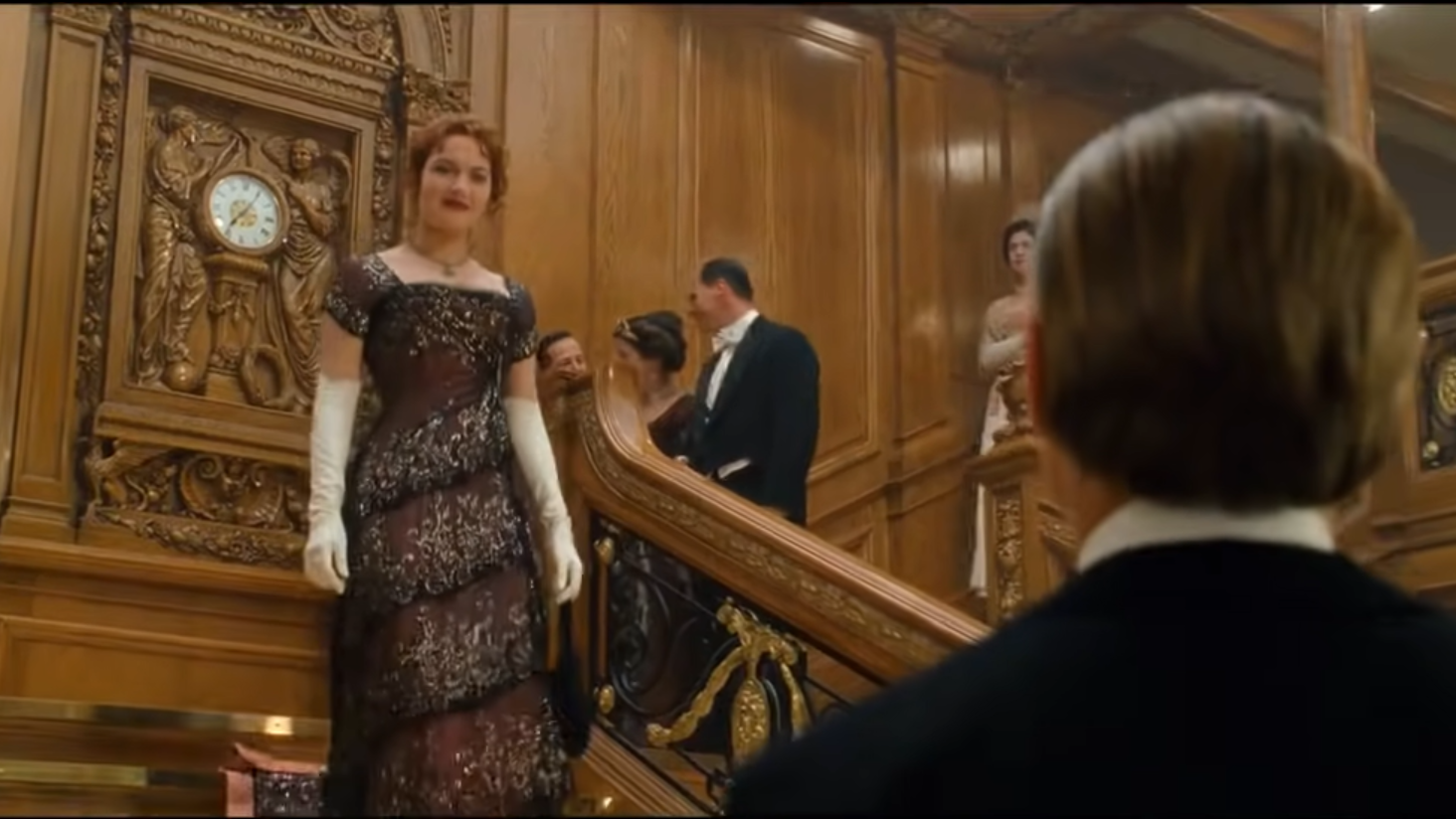
The film Titanic incorporated the ship’s real-life staircase, which has been described as the pièce de resistance of the First Class passenger areas, when poor boy Jack Dawson visits his lady love in first class. He’s visibly awestruck and uncomfortable by the staircase’s grandeur as he walks down it, noticed by absolutely no one, and when Rose herself descends a minute later, the positioning reminds the audience that she is, quite literally, above him.
Gone with the Wind prominently features grand staircases in more than one antebellum mansion and there are belles in ballgowns aplenty, at least in the first half of the film, before everyone is broke or dead. But the most memorable dress is never seen on stairs. After the war, Scarlett O’Hara needs $300 to pay the taxes on the plantation estate where she grew up. Gentleman convict Rhett Butler is the only person left she can trust to have that kind of money on him. The actual film has Scarlett tearing a set of green velvet curtains down from their rods to make her man-catching dress, which she wears to visit Rhett in a horse-stable-turned-people-jail, where the humans aren’t granted the luxury of fine staircases and the horses probably wouldn’t like them. But when Carol Burnett parodied the film in a 1976 comedy sketch, Rhett is out of jail and in her front entryway as she descends the stairs, curtain rods still jammed through her sleeves.
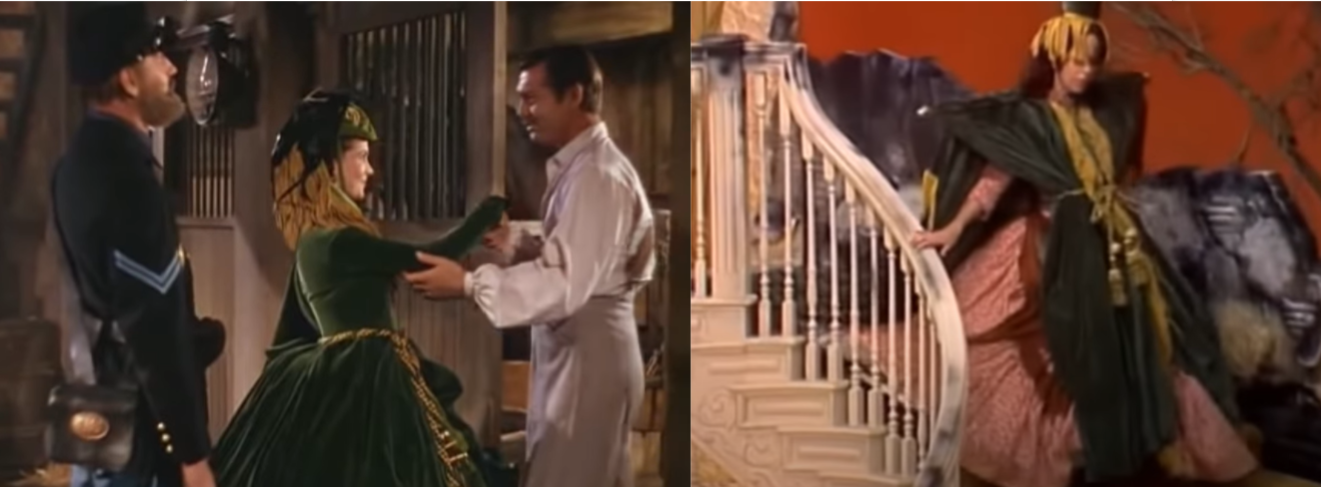
Making Carol walk all the way down the stairs drags on the awkward flamboyance longer than it would’ve lasted if she just walked through the door. Television editor Tucker Wiard later said that the staircase moment provoked a laugh longer than any other laugh in the show’s history and it had to be edited down. The crux of the joke is, of course, that Scarlett didn’t remove the curtain rods before making her dress, but inserting a staircase into a scene that originally didn’t have one invokes that grand lady mystique that Scarlett is trying (and failing) to conjure.
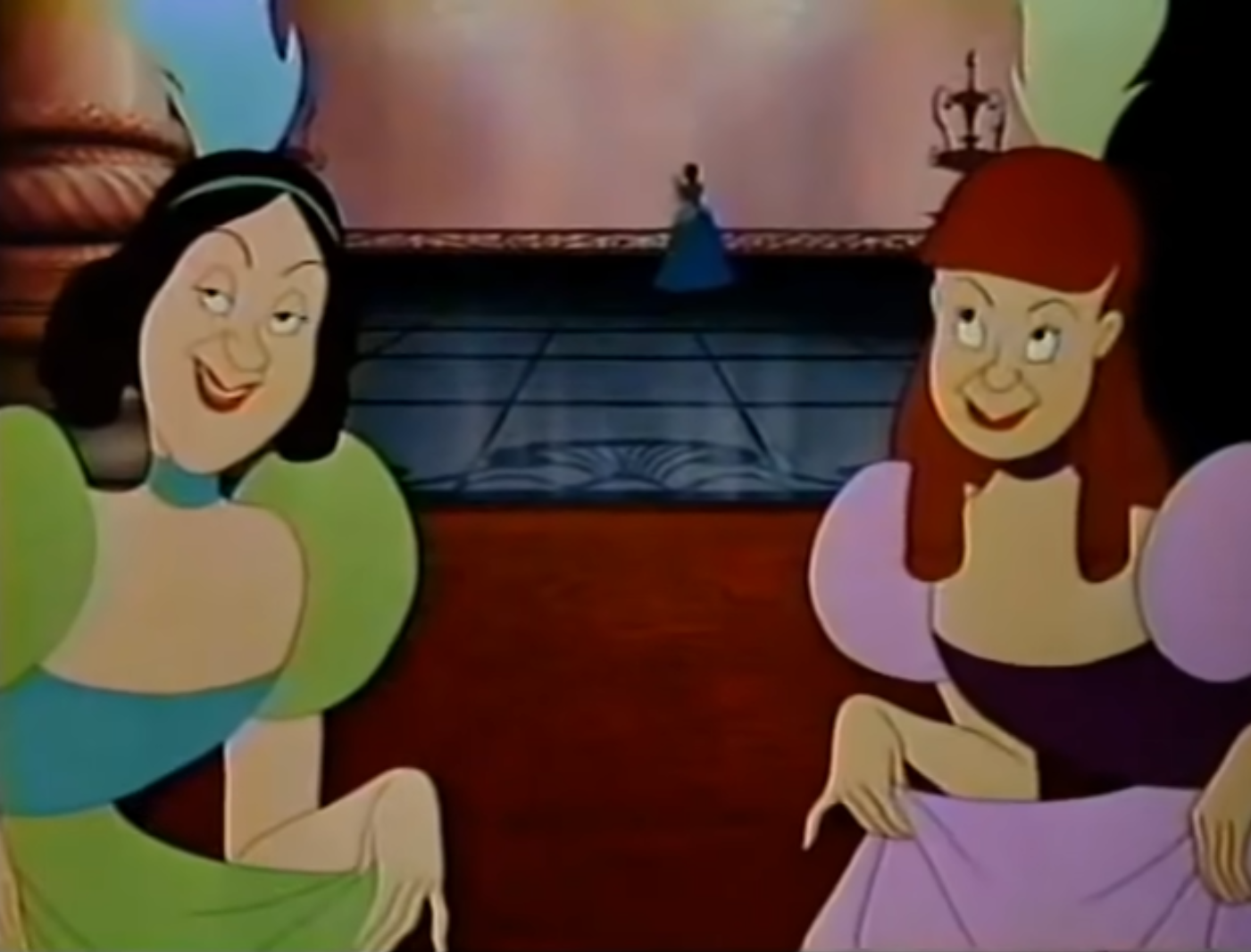
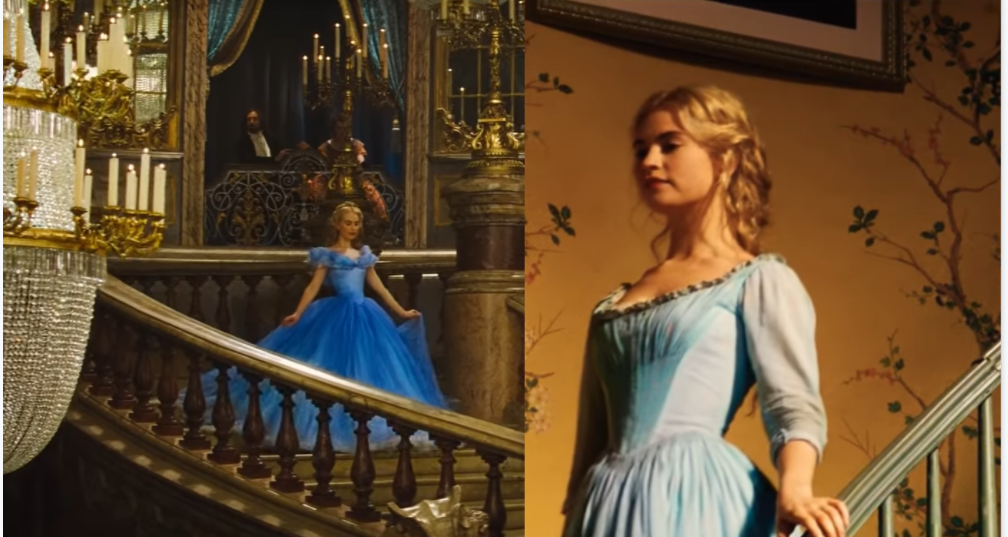
Disney seems to have been unaware of this trope’s potential in 1950, when their initial Cinderella motion picture debuted (it preceded Julie Andrews’s staircase scene by seven years). But over the next sixty-five years, new filmmakers grew up with a deluge of staircase ladies-including Disney’s own Belle. When they remade the story into a live action film in 2015, Cinderella was afforded a staircase entrance in departure from the animated film, where she enters at ground level. The aesthetic shtick of any Disney remake is “look how pretty our budget is.” If they’re going to drop a few thousand dollars on a twelve-layer silk dress that takes the actress 45 minutes to get in and out of, you can bet they’re going to make us look at it for as long as possible.
Live-action Belle, likewise, reiterates her staircase entrance. Even Jasmine gets a mini one on the short staircase across the chamber where she has her formal introduction to broke-joke-in-disguise Aladdin, who is very much below her.

The purpose of a staircase entrance is manifold. It shows off the heroine’s dress and shoes, provides a focal point for audiences and ballroom spectators alike, and physically conveys her ascendancy in social status as the prince pinpoints her as the only lady in the ballroom who stands above him.
